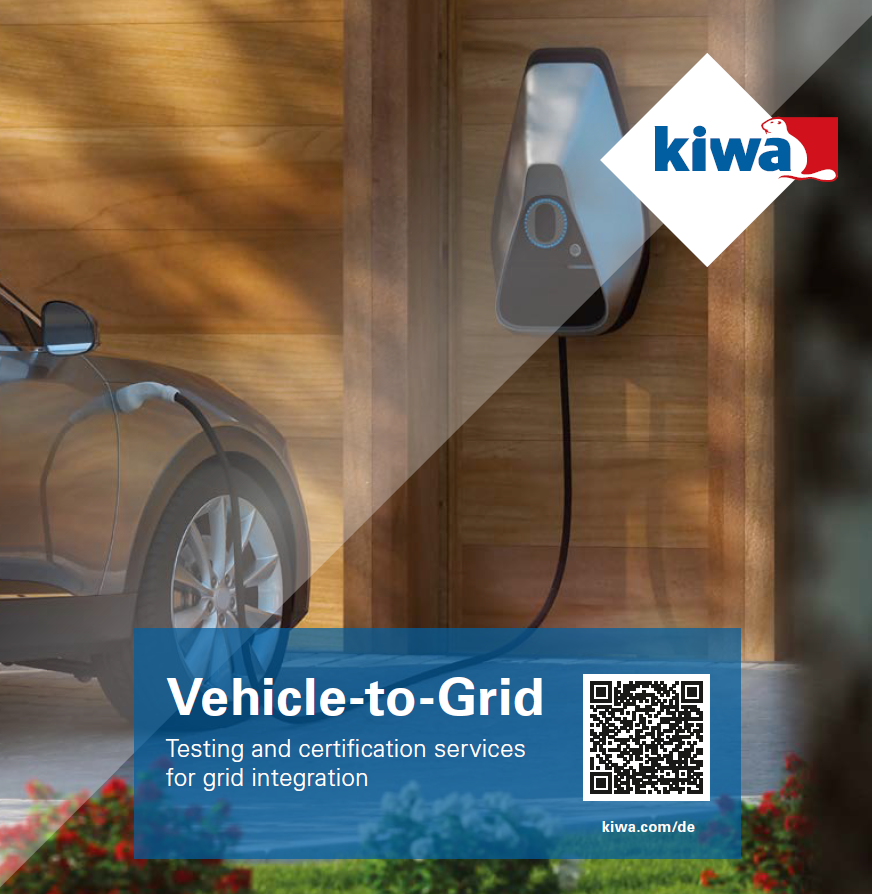
Vehicle-to-Grid: Testing and Certification services for grid integration
Receive a quote tailored to your needs
What is Vehicle-to-Grid?
V2G (Vehicle-to-Grid) is the bidirectional charging of electric vehicles. In this process, the vehicle is not only charged but also used as temporary battery storage to feed the stored energy into the power grid or the home’s energy system. V2G is the next logical step following Smart Charging (Grid-to-Vehicle) and enables grid-support through charging and discharging of e-vehicles.
What other areas of application are there?
V2X (vehicle-to-everything) is a collective term for various sub-forms of feeding electricity back from vehicles and includes:
V2B (vehicle-to-building): Avoiding peak power demand for businesses with their own electric vehicle fleet,
V2H (Vehicle-to-Home) - intermediate storage of electricity from a PV system for single-family homeowners,
V2V (Vehicle-to-Vehicle) - energy exchange between 2 or more electric vehicles,
V2L (Vehicle-to-Load) - operation of electric appliances with power supply directly from the vehicle.
How does Vehicle-to-Grid work?
Electric vehicles are connected to the public power grid via a bidirectional charger. This V2G charger allows power to flow in both directions, so that the electric vehicle can temporarily store excess power from the grid when needed, but also feed it back into the grid later.
In this way, vehicle-to-grid technology serves as load management for the public power grid, helping to balance the grid and prevent blackouts or other disruptions. Electric vehicles become an active part of the power grid and must comply with future grid code standards.
What are the benefits of vehicle-to-grid?
- Controlled charging cycles when prices are lower
- Electricity storage for times without solar or wind generation
- Reduction of total cost of ownership for fleet solutions
- Delivery of electricity to public charging stations
- Grid operators can optimize investments and stabilize the grid
- Energy market players can better optimize the balance in the grid
How do you benefit from working with Kiwa?
- DAkkS / ilac accredited testing laboratory
- Certificates of conformity to national and international standards
- Bi-directional DC power supply up to 1500 V and 150 kW
- Bi-directional AC power supply up to 630 Vac and 135 kW
- Provision of cooling liquid between -40 °C and +60 °C
- Fully variable CAN bus system with up to 4 channels
- Environmental/IP testing
- Global market access
- Large international network with many additional testing capabilities
Worldwide Grid Code Certifications:
|
|
|
|
|
|
|
|
|
|
|
|
|
|
|
|
|
|
